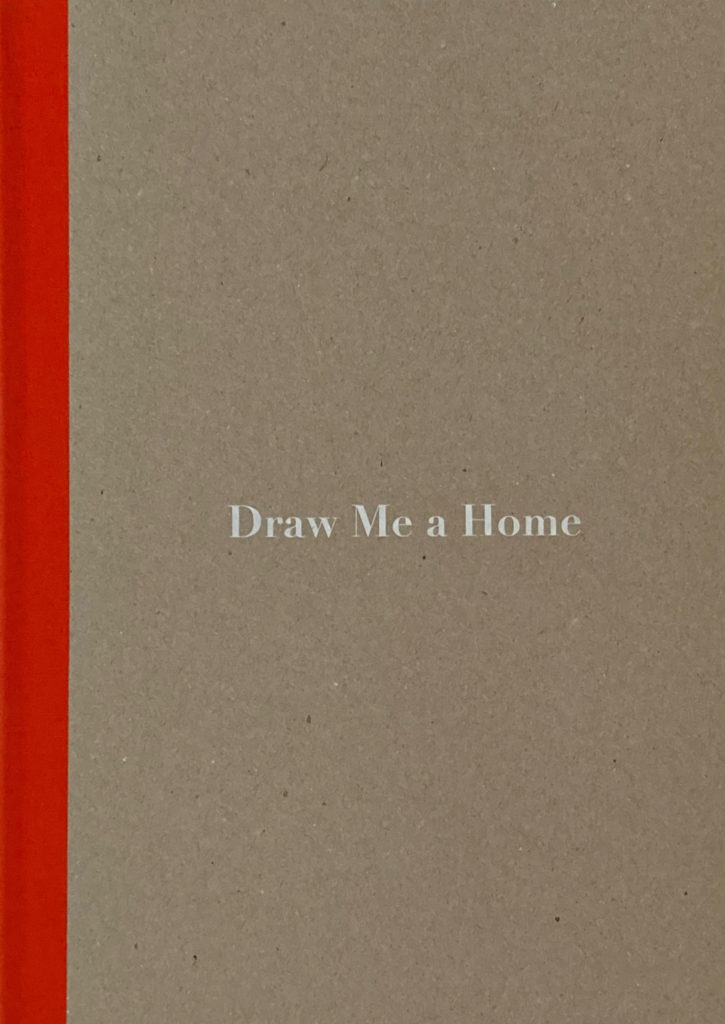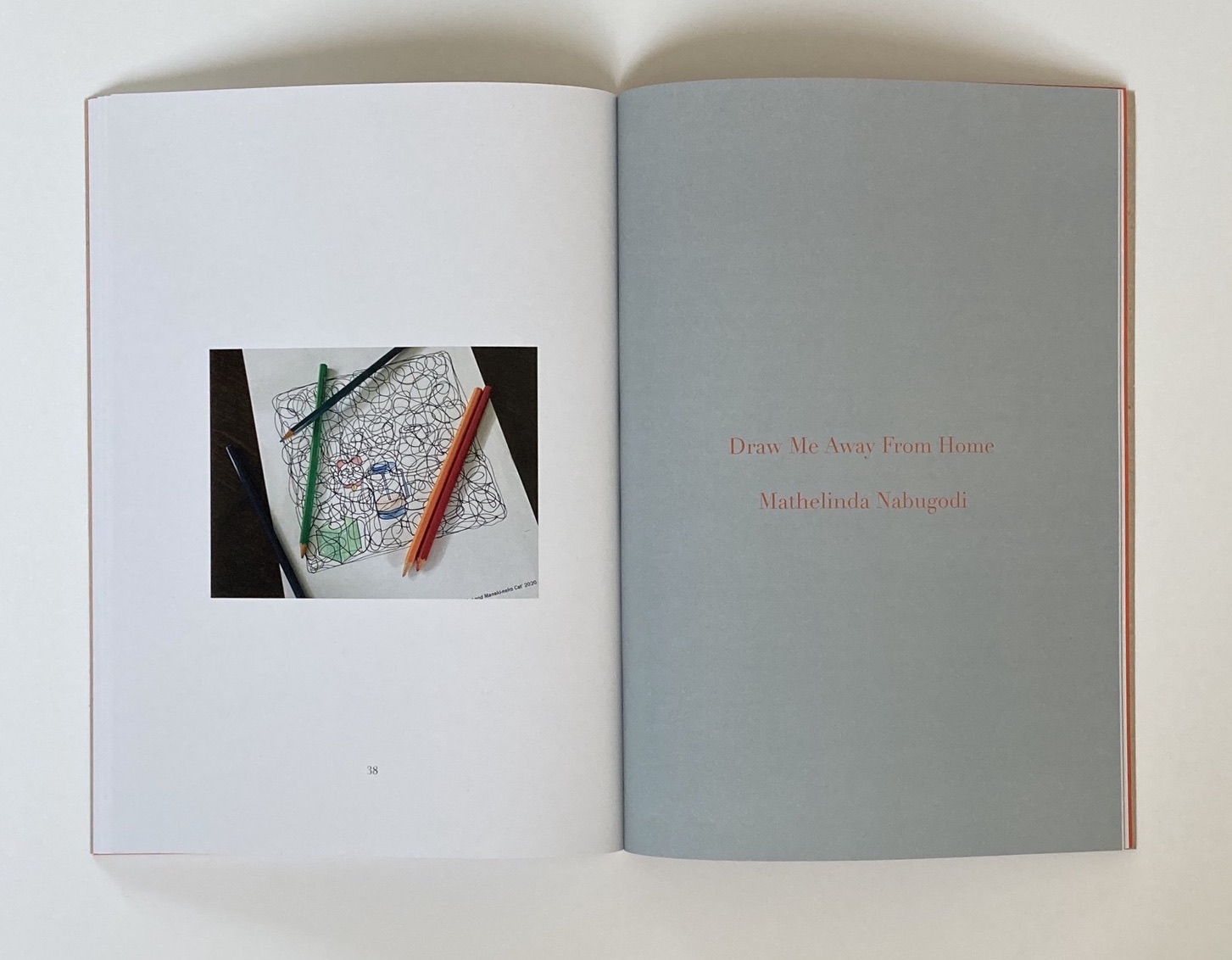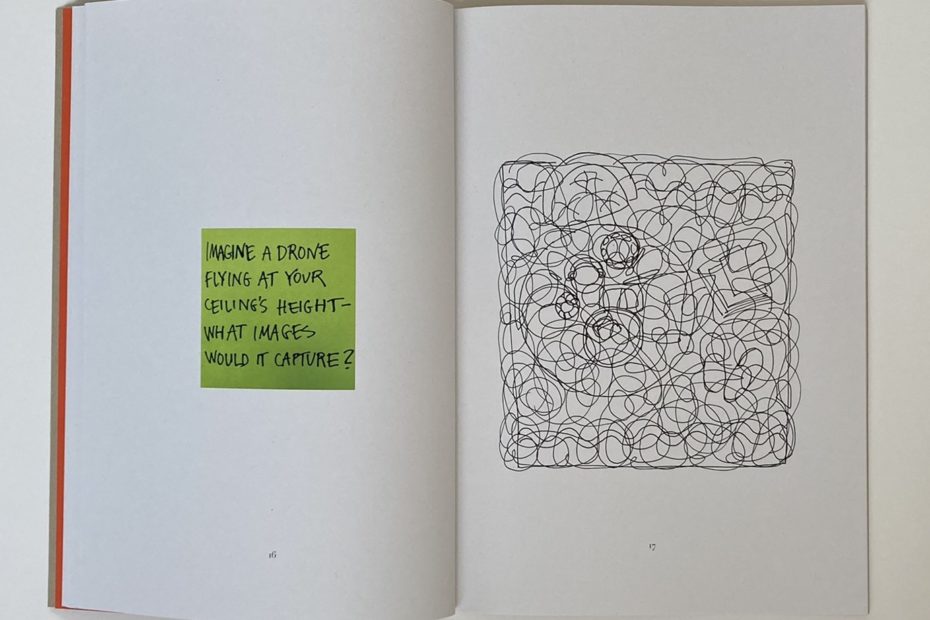
Afterword is a Q&A series with authors to give an insight into the different ways you can produce a publication. Every author is asked the same questions. In this post, artist Idit Elia Nathan discusses their recent book Draw Me A Home launching on the 28th May 2022.
IEH: Drawing on my formative education and practice in theatre, my current visual arts and inter-disciplinary work combines research and its dissemination, often in the form of socially engaged projects with a strong emphasis on play. My work is participatory, collaborative and often theatrical. I collaborate with artists, curators and diverse communities to develop mostly site-responsive interventions often in the form of mixed media artworks. These include interactive installations, live events, games, audio visual works and playful walks amongst others.
Draw Me a Home is designed to document and present the distinct processes and methodologies that informed the work produced and exhibited at a similarly titled exhibition at Departure Lounge’s gallery windows in Luton and online during July 2020.

1. How did you start making your publication?
In March 2020 I began working in collaboration with curator Natalie Pace and Departure Lounge gallery in Luton on Draw Me a Home - a site responsive and socially engaged project that following the COVID 19 outbreak underwent some substantial changes. The original idea of turning up in public spaces with a model of a house to generate conversations about home and what it means to Lutonians had to quickly move online and reached people on the gallery’s radar but also those much further afield than originally planned. The seismic changes that impacted all our lives, binding us to our homes significantly informed the investigation, which inspired the project itself and hence also the publication.
For the publication, I worked closely with artist Sarah Wood. We worked together during COVID 19 lockdown so our exchanges about the form of the book were primarily conducted online. It’s quite difficult to think about the materiality of a finished book when your discussions are virtual – hard to test paper weights and texture and shades of colour when you’re not side by side to make decisions. This meant the design process ended up being far longer than usual.
This actually proved useful in the end. We benefited from input from the printers at various stages along the way of the design process so when Draw Me Home finally landed we really felt that the making of the book was a truly collaborative dialogic process.
“…we really felt that the making of the book was a truly collaborative dialogic process.”
Sarah used InDesign to design the book and we were able to share drafts via the Adobe Cloud or simply as pdfs.
2. How did you print your publication?
Very early on we decided to work with Calverts Co-operative in London.
Sarah had worked with Calverts before and knew how attentive they’d be to the specific quality, feel and ‘look’ we wanted to achieve. She also felt their own history and ethos (they are named to honour the radical Civil war publishers Giles and Elizabeth Calvert) would add another dimension of interest to a book which asks questions on one level about how we see and construct the world we share.
Usually, you’d recommend a printer whose turnaround is fast and whose quality of work is high. All this is true of Calverts in usual times but with this project the extra-miracle Calverts performed was maintaining attentiveness and creative insight throughout an extremely protracted and disrupted design process. It’s hard to keep a project in mind over months when you’re working on many print projects. Calverts were careful and patient and considered throughout – no mean feat during this COVID time of disruption.
For the internal pages we opted for Nautilus classic for its tactile quality and its opacity for image reproduction. For the cover we opted for greyboard with a die + foil block title in white with fabric tape (Ratchford Windsor Upton) for the binding. The book was printed digitally. The inks are all natural dyes.
“Sustainability was a central concern. The printing process can be a very toxic one.”
Sustainability was a central concern. The printing process can be a very toxic one. We wanted to ensure that the publication of this book would have as low an impact on the environment as possible. Calverts’ reputation is based largely on their considered used of ethically sourced paper and ink. They were pioneers in this, caring about good environmental practice long before it became part of the general conversation. We wanted to honour this legacy. For a socially engaged art project it was essential that the material outcome should model good practice.
3. How did you fund your publication?
Draw Me a Home was funded by Arts Council England with additional support from Culture Trust (Luton), Departure Lounge and Social Art Publications.
The project remained within the planned budget - despite the onerous circumstances imposed by the pandemic and thanks to partners’ flexibility.
4. How did distribute your book and what has the response been?
For a review of the project see here. The project has also gained visibility through the Social Art Library -you can see it here.
5. Any final tips and tricks?
Obviously, the pandemic had initially seemed like a huge threat. However, against all the odds the changes imposed on the art project itself and the delays in producing the publication have only contributed to enrich and solidify the outcomes.
Things took longer than we thought. The pandemic caused huge disruption along the way, from illnesses to paper shortages. Thankfully, we managed to forge a way forward and the project and ensuing publication materialised.

Following its launch Draw Me a Home will be available to purchase online on various platforms [tbc].
The launch will take place on 28th May (5-7PM) at St Peter’s church (by Kettle’s Yard gallery), Castle St. Cambridge CB3 0AQ - RSVP here.
Instagram @iditelianathan
